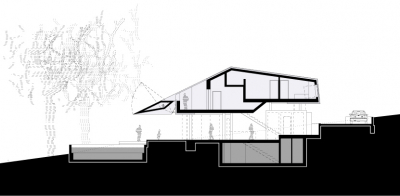House F
Project description: House F
The starting point for the planning of the house was the goal of coupling the residential quality and the topography of the idyllic orchard lawn with the living rooms of the house.
Due to the stipulation of a pitched roof by the authorities and in connection with the individually designed roofs of the current and historical buildings in the neighbourhood, an interesting debate ensues on the subject of pitched roofs. From this, the concept of subdividing the new building into three zones develops:
1) The ground floor is completely submerged in the earth (cellar).
2) The garden floor, of which the base is oriented to the topography of the plot of land, is openly embedded in the orchard lawn.
3) Upon this, the corporeal top floor completes the contours of an ostensibly pitched roof type of house.
The associative ambivalent perception is, on the one hand, a normal pitched roof house, built on a slope, where the mass of the garden floor has been subtracted, and on the other hand, a levitated flying object, which thus accentuates the openness of the garden floor.
This perceived condition of being "poised in limbo" is a good example of how architecture, although of course always subject to the law of gravity, can apparently overcome these static constrictions with use of visual association and a specific perception strategy.
The actual form is based on a synthesis of this associative form design with fundamental criteria such as function, construction, material, lighting etc.
The garden floor is completely glassed, in order to connect the interior with the orchard lawn in an unbroken flow. Also in a flowing manner, the orchard lawn is furnished both inside and outside with boxes and spaces.
The sheet-metal cladding of the "flying object" top floor conforms with the ambivalence of roof and vehicle body.
The idea of a levitated flying object leads to a roof body that covers the terrace and the interior spaces of the garden floor. A loggia is created in the shade in front of the living space. In summer, the glass facade of the garden floor is thus shaded and overheating is prevented. In spring or fall, parts of this roof can be folded up like the wing flaps of a flying object. Thus light exposure is adapted to requirements and solar radiation can heat the living rooms. Here, the massive base plate serves as a heat storage medium.
The "playful" optimization process of lighting and energy management becomes an integral part of the moving, processual structural form as a whole.

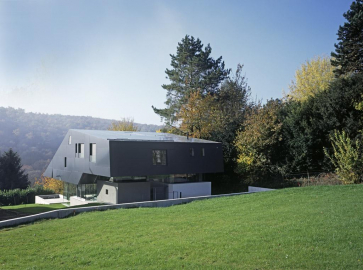
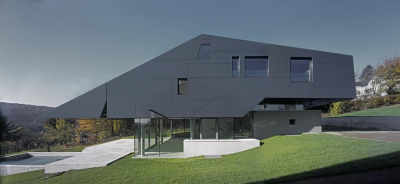
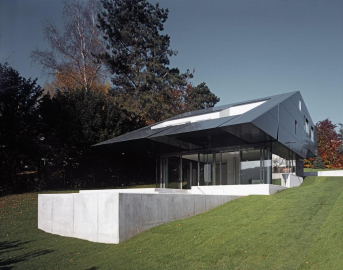
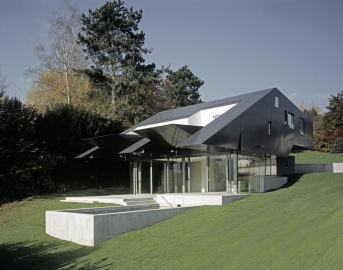
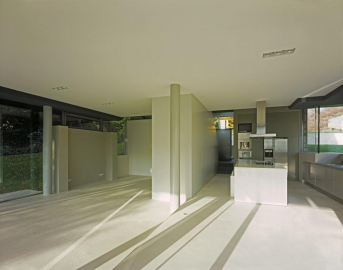
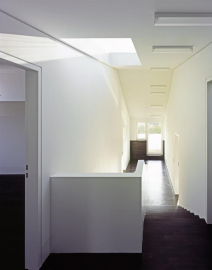
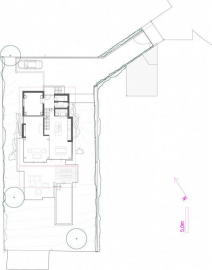

.jpg)
